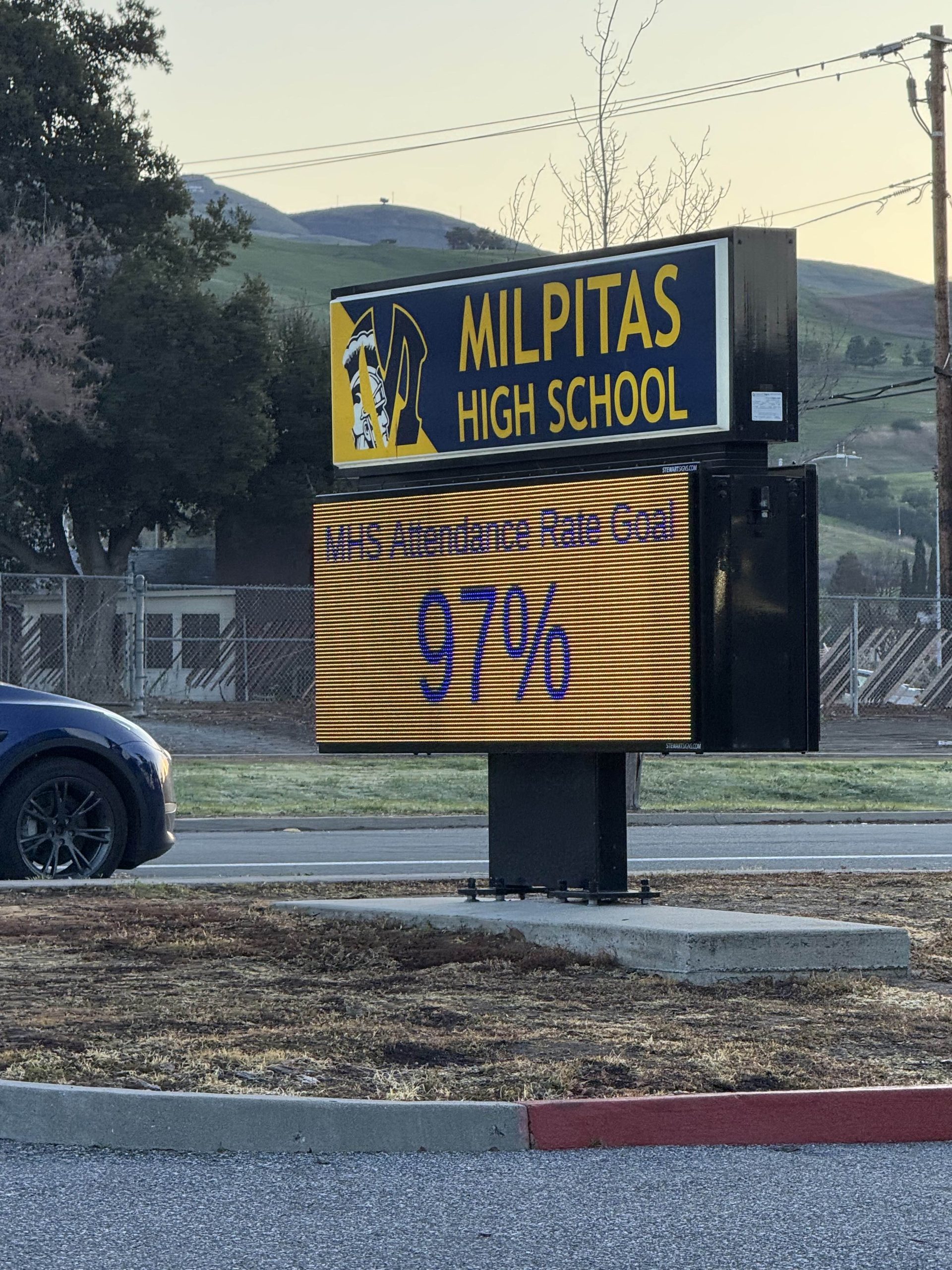The district started an attendance initiative last year, trying to get all schools across the district to reach 97% attendance, Assistant Principal Casey McMurray said. By raising student attendance, it not only benefits the student’s education but also helps give the school funding, he added.
To try and bring more awareness about the attendance initiative, attendance data and emails are being sent on Parent Square, McMurray said.
“We’ve included it in our School Site Council, in our PTSA meetings, as well as other meetings at the district level,” he added. “We’ve tried to come up with some incentives and rewards and recognitions for school attendance by month, by grade level, by school.”
McMurray had asked leadership to help with giving out incentives, Activities Director Deana Querubin said. One of these incentives is giving out lunches to students with perfect attendance, provided for by PTSA, she added.
“We actually visit the classrooms,” Querubin said. “If a person wins for that month of the lottery, our job is to visit those four or five (students) per class. We send our class officers to go visit those kids in their fifth period. We just tell them congratulations on getting great attendance.”
The reason why the district chose to have a goal of 97% was because that was the average rate of attendance prior to COVID-19, Chief Business Officer Dorothy Reconose said. After COVID, the average attendance rate dropped to 95%, and they wanted to raise it back up again, she added.
“The hope is once we get ourselves back up to 97%, then we increase the goal,” Reconose said. “Maybe now we reach out for 98%. We don’t want to just say our goal is 98 or 99% but we’re so low right now. So it may seem like it’s unreachable because you’re talking 4% increase. So we want to start working little by little.”
Most of the district’s funding comes from student attendance, Reconose said. It makes up $121 million out of $162 million of the budget, she added. This isn’t enough to run the schools, which takes about $180 million, she said.
“Grants are not attendance related, but it’s still based on the population of the students,” Reconose said. “Federal funds are based on our unduplicated pupil count. Other state grants are the same thing, it’s always based on the population of the students. They always ask, ‘how many students do you have?’”
Looking at the attendance trend for the past eight years, freshmen have always had the highest attendance rate, McMurray said. The one-time exception was last school year, when sophomores had the best attendance, he added. However, seniors have consistently had the lowest attendance rate, he said.
“Mr. Wohlman and I met with a small group of seniors, and it was based on the fact that they had less than 90% attendance for the first semester this school year,” McMurray said. “We had lunch with them, and we asked them some questions about why they don’t come to school sometimes, and we heard some really insightful comments.”
All the seniors were virtually projected to be on track to graduate, McMurray said. They all had various reasons for not coming to school, he added.
“Some had to do with illness, some had to do with work,” McMurray said. “Some had to do with how much they could get done at home versus being at school and not really seeing a difference that it made.”
Overall, the initiative has increased attendance and has brought positive effects, McMurray said. He’s received a lot of positive feedback from parents, staff, and students about the messages sent out on Parent Square, he added.
“Maybe they’ll (students) start to pay attention a little bit more, or maybe they’ll become more aware of the importance of attendance,” McMurray said. “We really care about attendance, and we want to recognize those who do come to school regularly.”

